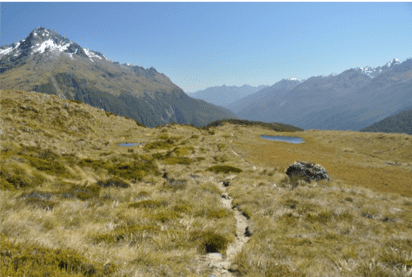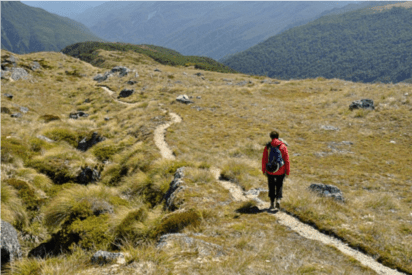While struggling with the definition of landscape photography, there is still an important question: is there a place for people in a landscape photo?
Landscape photography and purists
Many photographers approach landscape photographers from a “natural” perspective and want to show as few people and human influences as possible in their photographs. Other landscape photographers incorporate or even focus on human influences in their landscape photographs. Elements such as buildings, cities, and industry could be included in landscape photography. For purists, landscape photographs can only show natural elements such as trees, mountains, and rivers. Animals are still tolerated, but certain landscape photographers scrupulously exclude people or even the influence of mankind. That is obviously not easy in our regions.
People in the landscape picture
We find examples of well-known landscape photographers who explicitly and consciously portray the presence of people or at least their impact on the landscape.
Including “humans” in the picture could be done in three ways:
- People give an impression of the landscape dimensions, and they can be used as a reference or focus point
- People reinforce the composition on an otherwise boring piece of background
- People who have worked the land and left traces.


The walker in this mountainscape provides a focal point and shows the real dimensions; therefore, the second photo has more dynamism in comparison to the first photo (Guy, 2013)
The added value of people in landscape pictures
So, if people contribute to a coherent image or the landscape has to give an impression of the world in which we live, I do not see any reason to ban people from landscape photos.
Both perspective and scale are powerful tools in the composition of a photograph.
By incorporating something of recognisable size into your image, such as a person, the viewer can conclude the size of the elements in the image. When a person stands by a tree or rock, we see how enormous it is. If that person would not be there, we may not have any idea at all about the scale.
I do not advise that a scale mark always be included. Deliberately avoiding scale marking can create intriguing images because viewers cannot be certain of what they see. They will have to keep looking for reference points, which will stimulate their curiosity.
Types of landscape
One speaks about different types of landscape: natural landscape, cultural landscape, transition landscape, urban landscape, cityscapes, and industrial landscape… In my opinion, this distinction makes little sense.
It was a typical American view that landscapes should be natural instead of overcrowded and man-made. Landscape means wasteland here. In the twentieth century, the work of Ansel Adams embodied this very clearly.
In the rest of the world, the public is more interested in landscapes where both the work of man and that of nature are visible. A moderately inhabited landscape was proof of civilization and of a harmonious state. In the European landscape tradition, signs of agriculture, landscaping, a few people and some isolated buildings were generally accepted in painting and photography.
When a landscape is inhabited, structures help fine-tune the composition and provide a point of interest. Such structures can be large and impressive, like cathedrals, Egyptian pyramids or Hindu temples, or tiny, like a small shed.
The revival of the natural look of landscapes?
The ‘Modern man’ bonds less with the landscape in which he lives. He usually lives and works in the city. However, he is aware of the myriad landscapes in the world, both beautiful and ugly, horrifying and soothing.
Perhaps that is why, nowadays, those landscapes are loved again. They offer the opposite of our own urban environment: vast wilderness with as little as possible reminding us of modern culture.
Manmade landscapes
Mankind has radically changed the landscape, and this varies from country to country. In large parts of Europe, there are little areas where man has never intervened. Even in our nature reserves, the landscape has been shaped and reshaped. We can still see untouched landscapes in the mountains, in northern Scandinavia, or on some small islands.
Our European cultural landscapes have their magic: burial mounds, castles, farms, orchards, fields, and rows of trees…
Landscape photography as a statement
In Australia or the United States, we still find large, relatively well-protected areas which can be considered the original landscape. Although tourism and pollution also occur here. Landscape photography is not only about the beauty of nature but also how it is seen through the eyes of a city dweller. It can also be used as a political statement, just as Ansel Adams did in his time or nowadays. French photographer, Yann Arthus Bertrand tries to show the degradation of the environment. Landscape photography is, thus, a way for the photographer to reflect his relationship with his environment.
Simplifying landscapes photo
I look for simplicity, light, and lines in my landscape photographs. Cultivated fields lend themselves perfectly to this purpose. When I look at many of my photographs, I notice that I try to include less and less over time. The ‘art of leaving out’ creates a stillness and makes the landscape more abstract.
Please take a look at my portfolio of photos of Moravia and Tuscany and tell me what you like or dislike.
Leave a reply